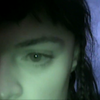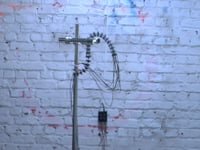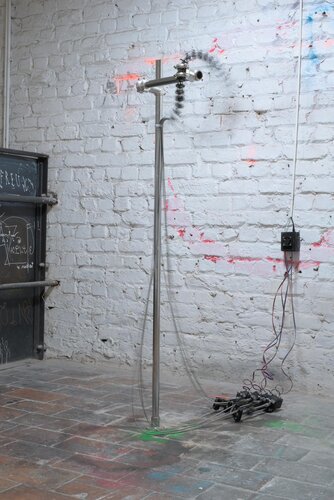cognitivesculpture_wrmlikeshape
cognitivesculpture_wrmlikeshape
De machine Cognitivesculpture_wrmlike (2024) komt voort uit het Continuum-robotica-onderzoek. Het minimalistische ontwerp nodigt uit tot fysieke interactie, terwijl de onvoorspelbare bewegingen – aangedreven door omgevingsstimuli – gevoelens van anders-zijn oproepen en menselijke emotionele reacties zoals empathie en angst aanwakkeren. Dit werk benadrukt de autonomie van de machine en haar somatische beleving van de ruimte en stelt daarmee de grenzen van menselijke emotionele betrokkenheid ter discussie.
***
tranfiguration operation: towards material emancipation in favour of cognitive sculpture
worm_like form is a translocation of formal issues arising from the field of ‘continuum-robotic’ research that has existed since the 1960s (Schinman, 1965)(Andersan, 1967). It is also used to produce special mechanical effects as an internal effector of movement. The form is often covered in biomorphic skin (supple sculpture) and interacting organs (ocelli, mouth, nasal passage), providing all the conditions necessary for its identification as a probable living otherness. The intervention is an operation of denudation: the aim is to reconsider this form in order to propose a machinic otherness reduced to its material minimum. Reducing its own existence to the evocation of its mechanical functioning (activation of cables-tendons). Breaking with a possible sense of uncanniness by dissociating itself from the mimicry of materials close to an organic physiology (skin texture, flesh colour, etc.).
medium movement: hybridising taxonomies of otherness
the austere mechanical presence of the device allows physical interaction with the machine's -minimal- internal sculpture. This formal minimalism is grasped as a possibility for investigating relational issues with the machine. Interactivity and the movement (integration of feedback) that results from it surpass the physical existence of the piece in favour of its kinetic presence. Making its behaviour (automation) the core of the device, the form's awareness of the occupation of the environment (body position) deploys different tracking patterns: tending towards the busiest zone as if in a call for attention, a call for awareness of its captivity.
Also based on the level of spatial activity, it will respond with a movement that is the more erratic and uncontrollable (random) the higher the level of agitation in its environment: this may suggest a panic struggle in response to the audience linked to the exhibition regime (existence as a work) to which it is subjected. A very minimal set of behaviours, but one that develops a feeling of otherness through its own somatic cognition of the space and its capacity to produce uncontrollable movements. At the same time, it questions the limits of human capacity for emotional deployment (empathy, fear, etc.): the device mediates the cognitions that run through it. Constructing as many neuronal projections as invidividualities confronting them: producing as many bodily interventions as sensitivities to otherness. Challenging the great taxonomies of modern categorisation. Accomplishing the intention of maximum -psychic- occupation in a minimal material intervention.
dissidence and the soft-robotic body
Almost wetware in the image of a soft/supple organicity, the soft robotic device always intervenes in space in a way that is contingent on all the parameters of the environment. The machine is flexible, and does not meet the deterministic Taylorist requirements (iterability and precision of movement) that exclude it from industrial production schemes. In this way, it dissents from the rationalist apparatus from which it emerges. Distancing itself from the project of scision (chisme) between nature and culture evoked and produced by the use of the machine, it is in short incapable of serving any modern project. A non-predatory machine, it can establish itself in contact with bodies, in an encounter proposing a different relationship to robotic otherness: possibly sensual, possibly provocative but never destructive. wormlike establishes a new paradygma of humanity/machine otherness, allowing a redefinition of the speculative ideals of human-mechanical interdependence.
containment architecture and a posture of complicity with control
The flexible dissident body, with its own cognition, is exposed and constrained by a chromed entity firmly implanted in the foundations of the venue. By physically crossing the space, we become complicit in the architecture of control of our held otherness. Our inevitable passivity in the face of irresolvable technical complexity would induce a posture of guilt. By disabling our ability to intervene, we ourselves become subject to our emotional projection into the machine: the reaction we develop when interacting with the detained form suddenly becomes symptomatic of our relationship to a speculative concentration device.

Manoah Camporini
More from this artist
Ontwerp: Studio Mast | Website: eps en kaas






